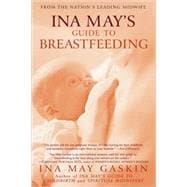
Note: Supplemental materials are not guaranteed with Rental or Used book purchases.
Purchase Benefits
What is included with this book?
| Introduction: Breast Is Best | p. 3 |
| How Breastfeeding Works, and How It Relates to Mothering | p. 17 |
| Preparing for Nursing | p. 33 |
| How Birth Practices Affect Breastfeeding | p. 51 |
| Getting Started: The Basics | p. 80 |
| Your Baby's Needs-and Yours-During the First Week | p. 103 |
| Problem-Solving During the First Week | p. 123 |
| Sleeping Arrangements | p. 144 |
| If You Have a Job Outside Your Home | p. 153 |
| The First Three Months | p. 169 |
| As Your Baby Gets Older | p. 188 |
| Nursing Twins...and More | p. 200 |
| When Babies Get Sick or Need Hospitalization | p. 211 |
| Weaning | p. 220 |
| Shared Nursing, Wet-Nursing, and Forgotten Lore | p. 225 |
| Nipplephobia: What It Is and Why We Should Eradicate It | p. 248 |
| Creating a Breastfeeding Culture | p. 275 |
| Acknowledgments | p. 281 |
| p. 285 | |
| p. 297 | |
| p. 303 | |
| Resources | p. 305 |
| Notes | p. 311 |
| Image Credits and Permissions | p. 323 |
| Index | p. 325 |
| Author Bio | p. 341 |
| Table of Contents provided by Ingram. All Rights Reserved. |
The New copy of this book will include any supplemental materials advertised. Please check the title of the book to determine if it should include any access cards, study guides, lab manuals, CDs, etc.
The Used, Rental and eBook copies of this book are not guaranteed to include any supplemental materials. Typically, only the book itself is included. This is true even if the title states it includes any access cards, study guides, lab manuals, CDs, etc.
Excerpted from Ina May's Guide to Breastfeeding by Ina May Gaskin
All rights reserved by the original copyright owners. Excerpts are provided for display purposes only and may not be reproduced, reprinted or distributed without the written permission of the publisher.